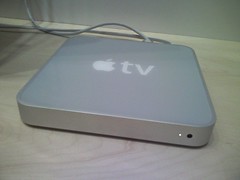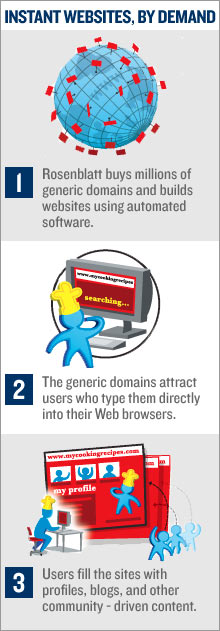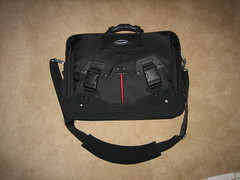In an effort to clean up component clutter and get the best possible audio and video experience, I elected to get rid of our old component system and install a very streamlined set of components in a cabinet that could be secured next to our TV. It is important to note that I wanted to get rid of the subwoofer that was on the floor, but still be able to add a subwoofer at a later time if I so elected.
Sound
I've been fascinated with single speaker units that produce virtual surround sound and furthermore I did not want to have to dig into the ceiling to install ceiling-mounted surround speakers nor did I want to have surround speakers on pedestals on the floor. One solution in this category is a series of sound projectors made by Yamaha, but the require a room with a back wall in order to reflect the sound and we don't have that back wall. Another solution, and the one that I went with, is the SoundMatters MAINStageHD (MSHD) theatre console. The MSHD is a single-speaker unit that fit perfectly on our mantle, matched the color of our TV, and produces amazing sound for roughly 1/3 the cost of the high-end Yamaha competitor. Audio inputs on the MSHD include single-pin 1/8 inch; analog, stereo RCA analog, coax digital, and optical digital, which were plenty for me (I should note that the Yamaha offerings have many more inputs and the high-end offering also features video inputs to allow the sound projector to change all inputs simultaneously). In the future I can add a SoundMatters (or other manufacturer) subwoofer and rear surround speakers if I so choose; I can actually even use another MainStage as the rear surround speakers if I want.
Video
We have a EDTV rather than an HDTV (I believe that means that our TV will display up to 720P rather than 1080P), but it still has a HDMI input for the highest definition possible digital video display (note that while HDMI is super-cool because it carries digital audio and video over the same cable, the HDMI portion of my installation was only used for the video signal to the TV as the MSHD does not support HDMI). I purchased the cheapest progressive scan Sony 5 disc DVD changer that I could find on Amazon with HDMI output -- Sony DVP-NC85H. We already had a TiVo Series II 80-hour recorder and a DirecTV box that I wanted to keep to use with the new setup -- unfortunately the TiVo Series II only offers S-video has the best output choice, but I'm just not ready to plunk down the money on the Series III box yet.
Storage
I wanted all of the components, with the exception of the MSHD to fit into a storage unit. Unfortunately I couldn't find an affordable storage unit that matched our decor that would accommodate the DVD changer. We basically wound up with a cabinet from Home Depot that is designed to be used with a closet system, but it was only $60, matched the wood finish of our other furniture, and was easily modified with basic tools -- the compromise was that the DVD player had to sit on top rather than inside. All of the "modifications"; consisted of cutting some round holes in the back of the cabinet to allow cables and wiring to pass in and out of the unit and to promote ventilation.
Controlling all of it
I wanted a solution that would allow everything in the cabinet to stay in the cabinet without opening the doors, which previously would have put into the realm of a semi-custom installation and/or ordering parts from SmartHome. Luckily the folks at Logitech deal directly with this problem in their Harmony 890 remote, which comes with a radio frequency (RF) to infrared (IR) converter that can control up to 8 devices. Although reviews were mixed on the setup, configuration, and operation of the Harmony remote, I decided to order it anyway because it was the perfect solution at th perfect price for my setup. The Harmony remote series is programmed using either Windows or OSX through custom Logitech software: you simply tell the software what components you have and their exact model numbers, and the Logitech software not only programs all of the devices into the remote over USB, but also designs and allows you to design "activities" (read "macros") for certain functions such as watching TiVo and watching a DVD. For the Harmony 890 series, the wireless extender/converter also has a USB port and must be programmed to control certain devices.
There are a few bugs in the Logitech software, but it wasn't too hard to set everything up; I did have to force quit the software once, but it picked right up where we had left off -- note that you do not want to use this software on a dial-up connection. Once the remote and the extender were programmed, I had to attached the IR emitters to the IR receivers of the various devices. It is important to note that there are 4 ports on the back of the extender and each port can control 2 separate emitters and therefore 2 separate devices. Due to the location of the TiVo box inside the cabinet and the DVD player outside the cabinet, I actually had to use 2 separate ports and emitters in order to control both devices. For the TiVo unit I covered the emitter in black electrical tape to ensure adhesion and also to ensure that stray signals wouldn't make it out to the DirecTV box (an anciallry benefit of moving the DirecTV box into the cabinet was that I could reposition and tape down the TiVo emitters on the box and not have to worry about it looking bad).
Although the wireless extender is designed to be mounted inside a cabinet, I elected to put it on the mantle directly next to the IR receivers for the TV and the MSHD; there's really no reason why I couldn't have put it in the cabinet, but it's so low-profile that it can hardly be seen and it's very accessible for USB reprogramming if necessary.
The Harmony 890 activities are very cool and the interface actually asks you if everything worked when you hit an activity button -- if something did not work, you can keep hitting "no" and the Harmony will ask you questions to get everything working correctly. I found out the hard way that it's best to have everything turned off before you start playing with the remote (or even better to turn everything on and then use the single "off&" button at the top of the remote to turn everything off before choosing activities). Once the remote gets pretty well dialed in, you shouldn't have any problems. Aside from the easy programming, the remote must have some sort of tilt sensor because it lights up when you pick it up, and the remote has a rechargeable battery that is charged when you put it in the dock -- assuming that we get in the habit of docking the remote, we shouldn't really lose it again.
Conclusion
I'm very happy with our setup for the following reasons:
- Functionality that you would expect from a custom installation and the ability to reprogram and expand the system indefinitely will the Harmony hardware and software.
- Clean and elegant looking installation -- the only thing that would have been better was to be able to route all the cables inside the wall, but with zip ties and sheathing, it's not too obtrusive.
- Excellent audio and video: the MAINStage HD produces absolutely incredible sound for being a relatively small single speaker unit and HDMI even with an EDTV is a world of difference.
For those of you that have the time and energy to perform and installation like mine, you can save a lot of money and get the benefits listed above. I do have to recommend the Harmony remote, but I will say that although the software is designed to try to cater to the basic user, you need to have some amount of computer skills and a lot of knowledge about your components and how you are installing them in order to not get totally frustrated.
Link -- SoundMatters MAINStageHD
Link -- Sony DVD Player via Amazon
Link -- Harmony 890 via Amazon
















